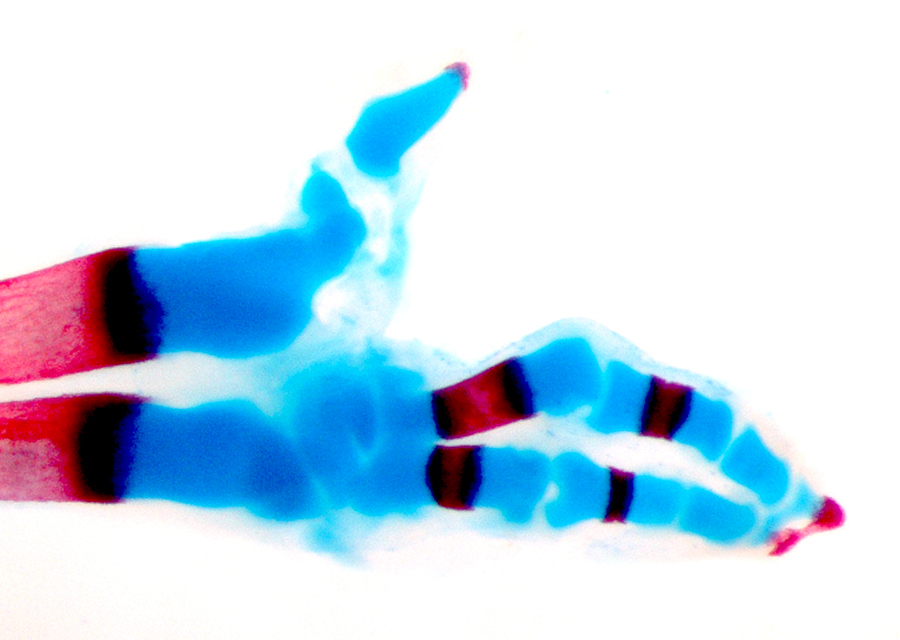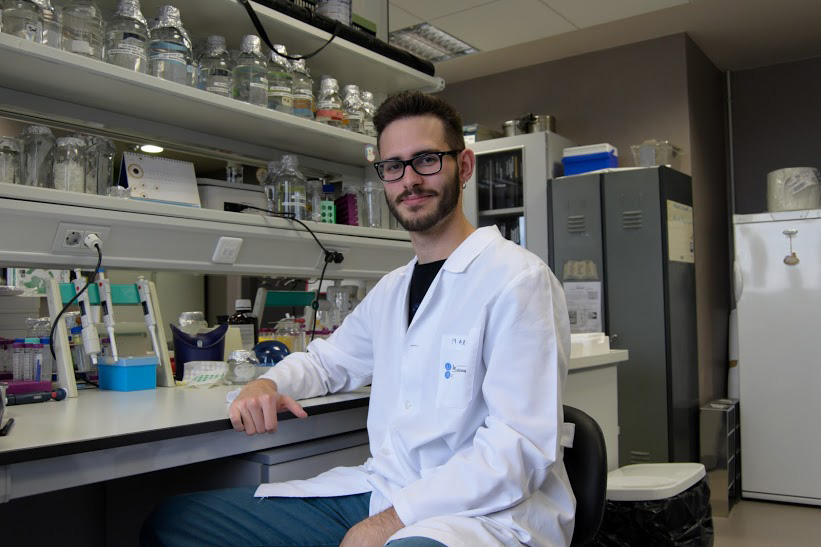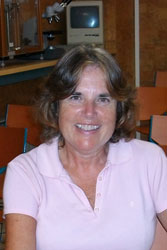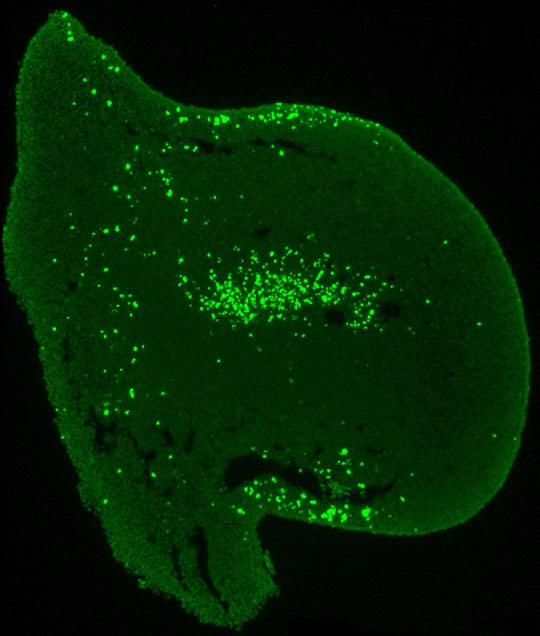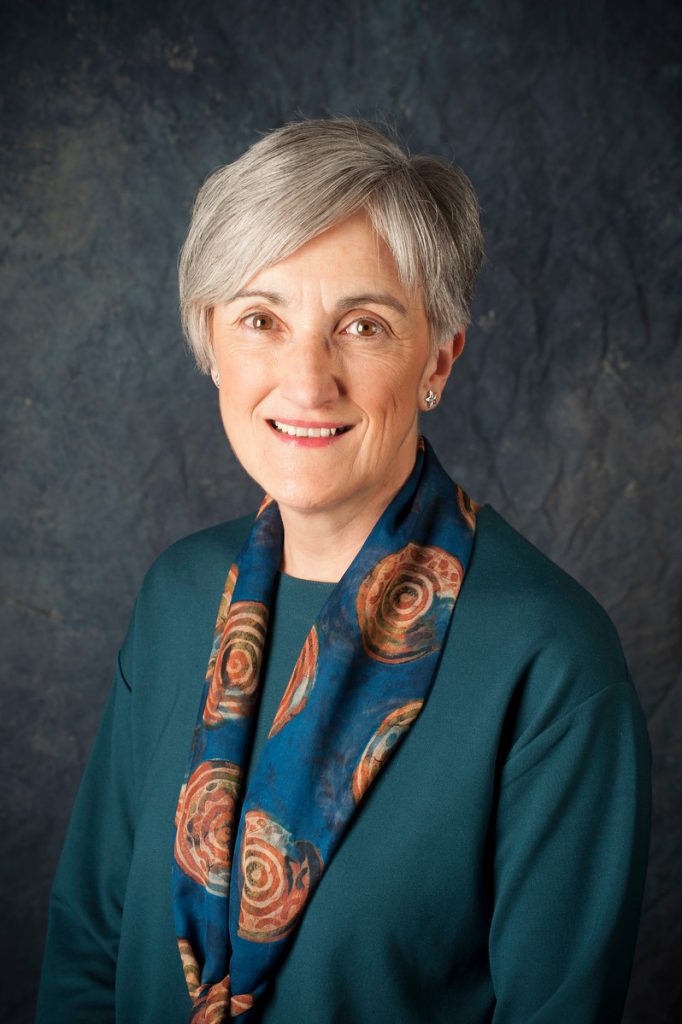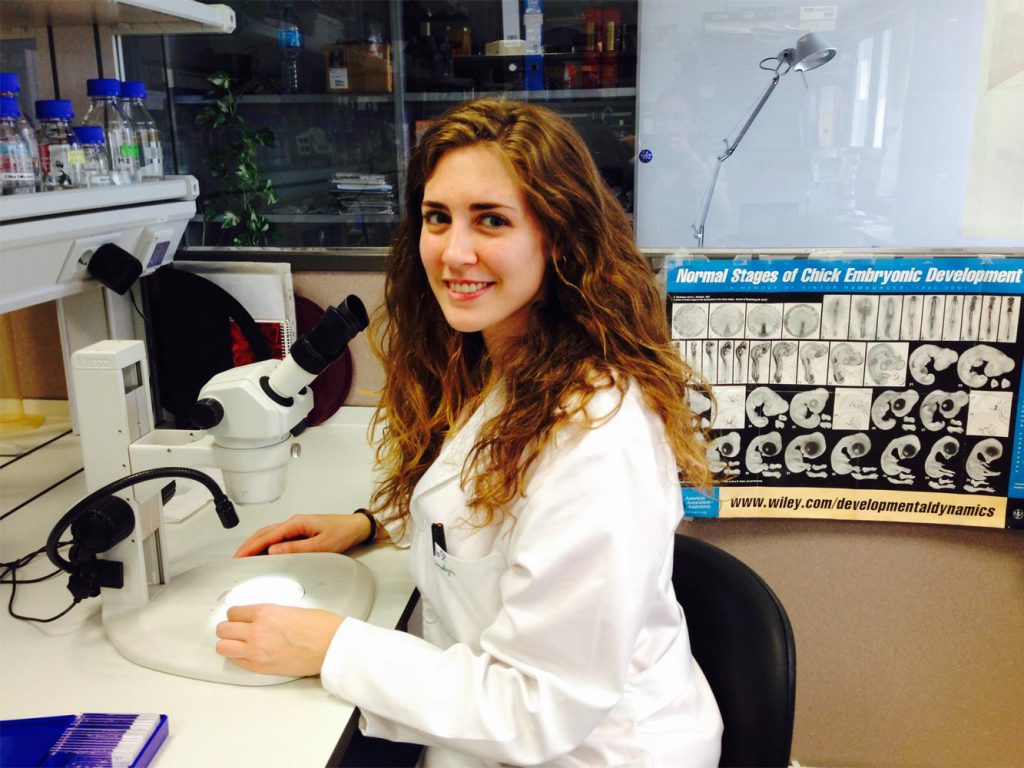
I am very interested in the role of Sp6 and Sp8, two members of the Specificity family of transcription factors that are necessary for limb development. The gradual reduction of Sp6;Sp8 gene dosage results in progressively more severe limb morphologies that go from a mild syndactyly, to Split Hand Foot Malformation, truncation and finally amelia. These malformations associate not only proximo-distal but also dorso-ventral defects.
To understand the Sp dependent regulatory network in the limb ectoderm I have focused on Sp8 and characterized its direct transcriptional activity by combining genome-wide ChIP-seq and RNA-seq analyses. The identified set of Sp8 direct target genes includes all major regulators of proximo-distal and dorso-ventral limb patterning, highlighting the complex mechanisms by which Sps connect both axis in limb patterning. I aim to validate Sp8 mode of action as well as to identify Sp6 direct target genes.
Phone: [+34] 942 206799 ext. 127
Email: rocio.perezg@unican.es
Work pictures
